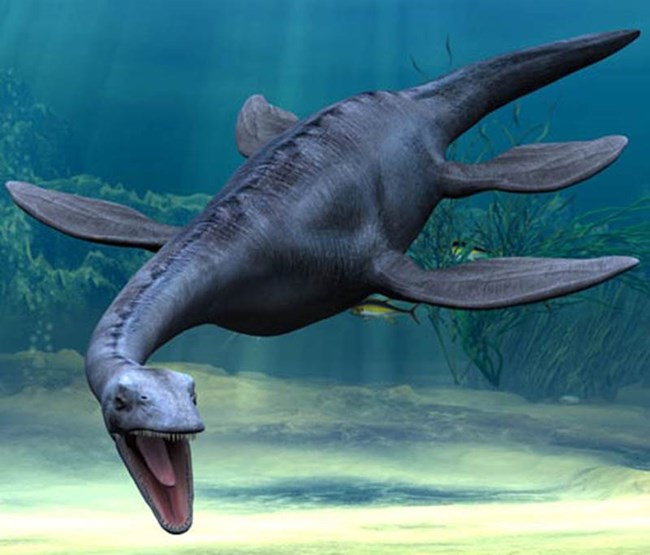Part of a series of articles titled Chaco Collections—Paleontology.
Previous: Mosasaur Jaw
Article

NPS illustration.
This fossil may be a shoulder blade, or scapula, from a large marine reptile, such as a plesiosaur. If identified, it would be one of very few plesiosaur fossils in the entire state of New Mexico. Plesiosaurs are long-necked ambush predators who hunted schools of small fish, ammonites, and other invertebrates. Many plesiosaur skeletons have been found with round, smooth stones called gastroliths in or near their abdomens, suggesting these animals swallowed them to aid with digestion. Sometimes over 100 rocks have been found in association with a single plesiosaur. Many animals do this today, including active swimmers like crocodiles and penguins, as well as ground-dwelling birds chickens and ostriches.
Footnotes linked to the model:
Footnotes
Part of a series of articles titled Chaco Collections—Paleontology.
Previous: Mosasaur Jaw
Last updated: May 3, 2021